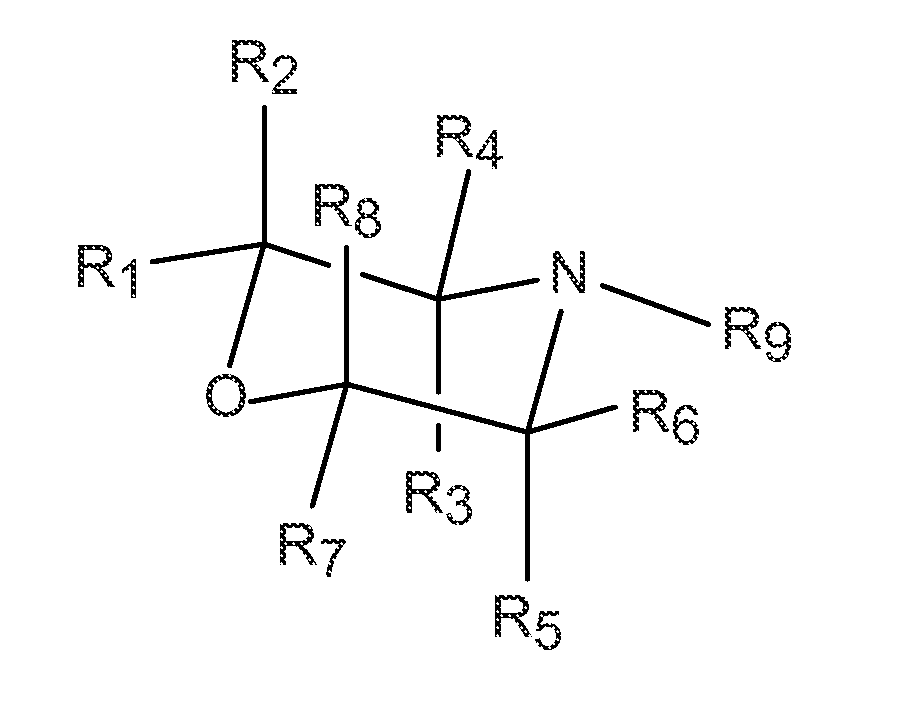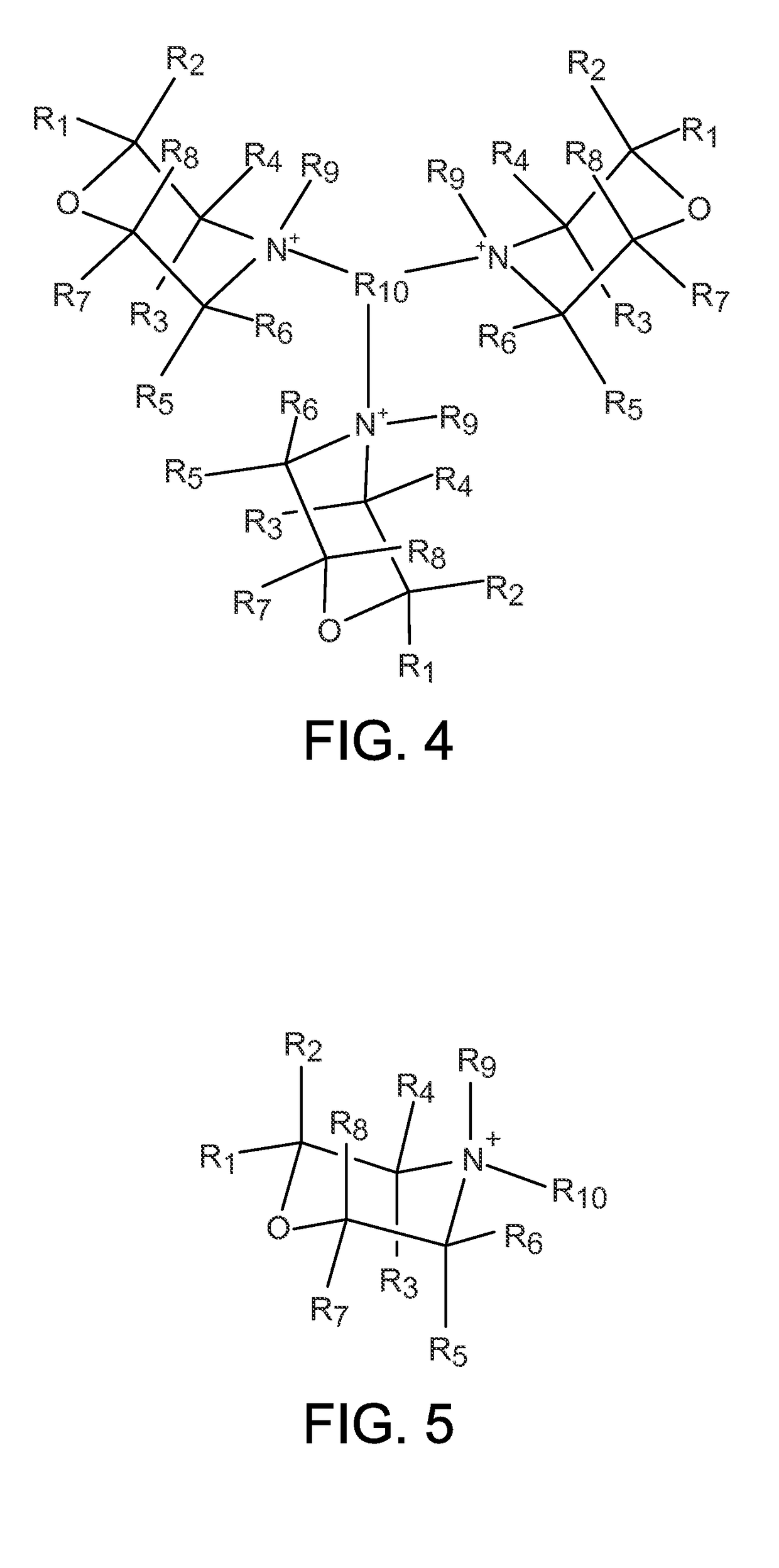Zeolites using an organo-1-oxa-4-azoniumcyclohexane compound
a technology of cyclohexane compound and zeolites, which is applied in the field of organo1oxa4azonium cyclohexane compounds, can solve the problems of difficult and expensive synthesizing of complex molecules such as osdas, and affecting the development of new molecular sieve materials
- Summary
- Abstract
- Description
- Claims
- Application Information
AI Technical Summary
Benefits of technology
Problems solved by technology
Method used
Image
Examples
example 1
[0129]422.44 g water was weighed into a 2 L Teflon bottle, and the bottle was placed in a 4 L beaker. Under constant stirring, 218.1 g 1,4 dibromobutane, 99% was added to the water. To this mixture, 204.34 g 4-Methylmorpholine, 99% was added. Approximately 1.5 L tap water was placed in the 4 L beaker surrounding the Teflon bottle to help control the heat of reaction. Low heat, approximately 50° C., was used to warm up the mixture. Stirring was continued until a yellow solution was formed and no clear additional phase was present. 13C NMR of the solution showed a ratio of 1 mole methylmorpholine to 2.83 moles 1,4-bis(4-methylmorpholinium)butane dibromide.
example 2
[0130]413 g water was weighed into a 2 L Teflon bottle. 474.1 g. 1,5 Dibromopentane, 97% (2 moles) was added. To this mixture, 176 g. Morpholine, 99% (4 moles) was added while stirring. The water and morpholine combined to form a cloudy phase while the denser dibromopentane remained on the bottom. The Teflon bottle was moved into a 4 liter beaker as secondary containment and placed under a high speed overhead stirrer for stirring at room temperature. Approximately 1-1.5 liters of cool water were added to the 4 liter beaker to disperse a strong exotherm should one occur. At about 15 minutes, the mixture began to turn yellow, indicating the reaction was beginning. The exotherm was mild. After an hour, the result was a clear light orange “solution”. The remaining 413 g water was mixed in to make the final solution. 13C nuclear magnetic resonance (NMR) was used to confirm that the product comprises a 3-oxa-6-azoniaspiro[5.5]undecane bromide solution. Peaks for the spirocyclic compound w...
example 3
[0131]1150 grams of the solution from Example 2 was contacted with 336.4 grams of Ag2O in a round-bottom flask, which combined to form a grey opaque solution. The flask was placed under a high speed overheard stirrer for stirring at room temperature (open system) for 1 day. The sample was filtered to remove the precipitated silver bromide and the final solution was sent for water analysis which showed that the sample was composed of 64.6% water. 13C nuclear magnetic resonance (NMR) was used to confirm that the product comprises a 3-oxa-6-azoniaspiro[5.5]undecane hydroxide solution. Peaks for the spirocyclic compound were observed at 67.1, 60.0, 57.9, 20.9, and 18.7 ppm with respect to tetramethylsilane. Resonances for morpholinium were present at 59.8 and 44.7 ppm. The ratio of spirocyclic compound to morpholinium was about 1:1. Comparing the 13C chemical shifts for the bromide and hydroxide salts in Example 2 and Example 3 shows that the interaction of the 1-oxa-4-azonium cyclohexa...
PUM
| Property | Measurement | Unit |
|---|---|---|
| temperature | aaaaa | aaaaa |
| temperature | aaaaa | aaaaa |
| wt % | aaaaa | aaaaa |
Abstract
Description
Claims
Application Information
 Login to View More
Login to View More - R&D
- Intellectual Property
- Life Sciences
- Materials
- Tech Scout
- Unparalleled Data Quality
- Higher Quality Content
- 60% Fewer Hallucinations
Browse by: Latest US Patents, China's latest patents, Technical Efficacy Thesaurus, Application Domain, Technology Topic, Popular Technical Reports.
© 2025 PatSnap. All rights reserved.Legal|Privacy policy|Modern Slavery Act Transparency Statement|Sitemap|About US| Contact US: help@patsnap.com



